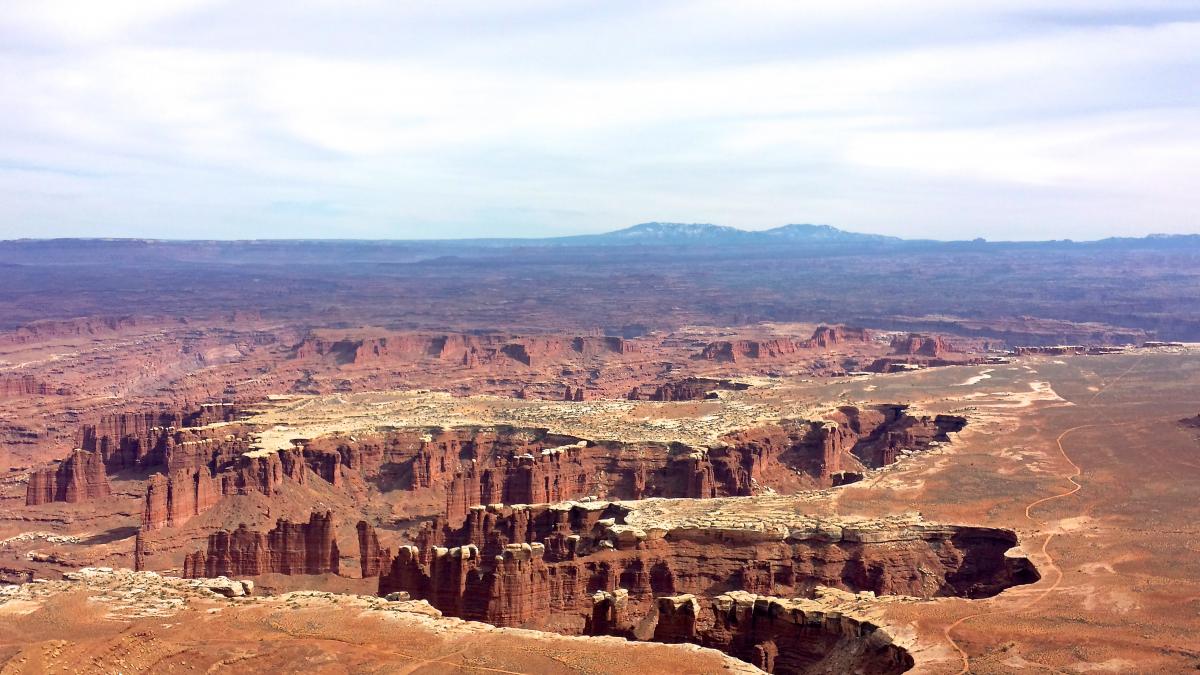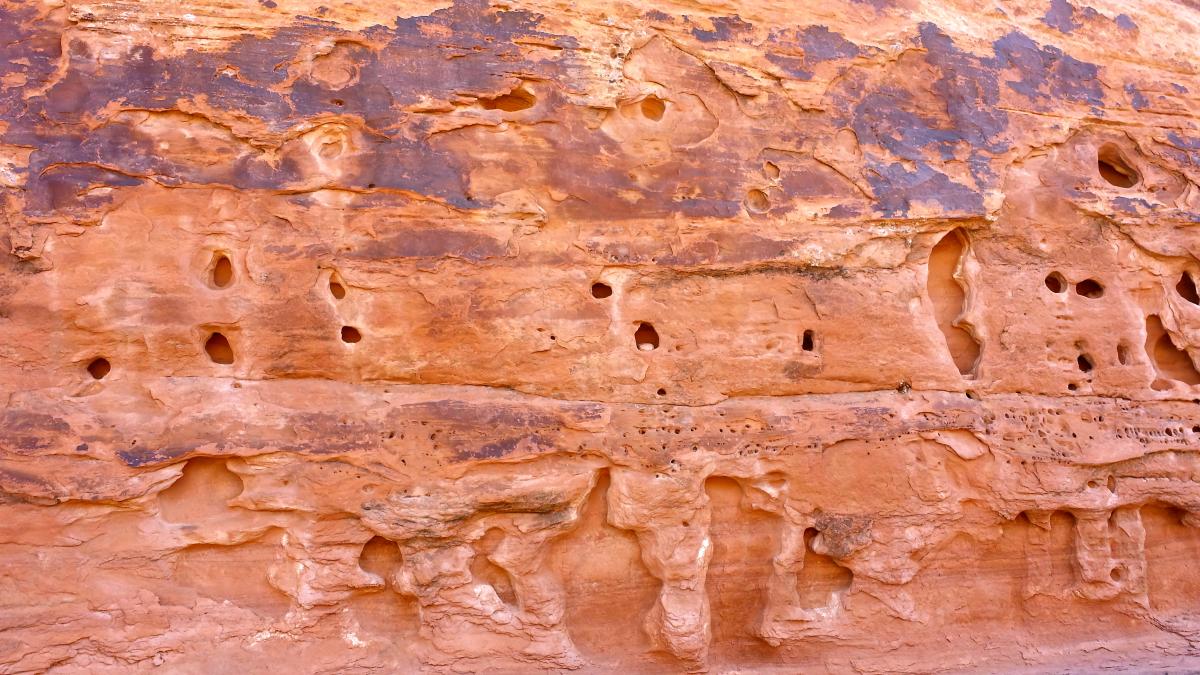
I expect the countless eyes and cameras that have adored this place to have dulled it. But I see all colors in the desert; and they’re not tainted, as far as I can tell. I try to learn the terms and reasons for why it became the way it is. I don’t forget one name—desert varnish: the volcanic gleam over rusty red cliffs, as if spread by palette knife—and I repeat it in my head every time I pass it.
From my new home in eastern Colorado, Moab, Utah is a six-hour drive down the shopping plazas and clone homes sprawling the front range, between the windy Rockies with shaved mountains, through jagged canyons and alongside bluffs and pride-rock buttes. Then the high, dry, red desert.
I sleep in a cabin that smells like pine. I bring my own sheets and walk outside to use the communal bathroom that’s out of paper towels. RVs and tents line up in rows, slept in by sturdy-built white Americans (few exceptions that I can see) with blond toddlers on the swing set by the gift shop, coolers of Budweiser, and hot dogs on the grill.
To a New England girl with eyes accustomed to trees, green, rolling hills, this earth is not the same earth. It’s erratic and brilliant. Textured like elephant skin and petrified clay. Futuristic and prehistoric; majestic and alien. Someone or something must have been architect to this place.
Wanderlust knocks loudly here. My routine neuroses are replaced by awe and calm.
“You want to know what the holy land looks like, girls?” says a pony-tailed mother to her teenage daughters. They all wear matching khaki sunhats. “Well, that’s it,” and she points to the cracked valley and pale mountains. “It looks just like that.”

Below the towers of slabbed rock and impossible arches, I feel small, ordinary, and temporary. They look old and confident—but they are temporary, too. They were not always here and they will not always be; erosion and time is how they rose and how they will fall. I find some comfort in seeing other arches in progress, shallow caves below buttresses that may become an attraction in a few centuries time.
I personify it all. Are the arches sick of the attention or do they lavish it? Are they old and weary and wise—or just old and weary? Does the canyon feel the scars of old mining roads in the valleys and the fracking and Port-a-Potties on the plateau above? Does it think the Park is doing a good enough job protecting it from us?
I take the same pictures and comment the same comments as the others, including I wish there weren’t so many people here; but I am the congestion; I’m in the background of their pictures and they’re in the background of mine. Ordinary against the backdrop of the extraordinary, making both seem more so.
Anna Hogeland is a clinical social worker and writer living in Boulder, Colorado.
Photos by author.




